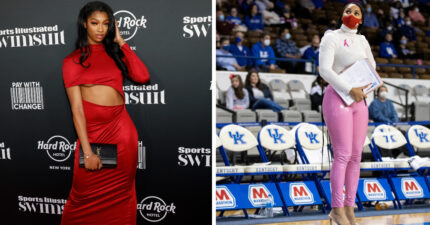The typical American can’t comprehend what an actual nuclear attack might look like. Radiation filled missiles used to kill people perceived as cancerous threats is something that most in the United States have only seen on TV or read in history books. But to those who have lived through this nightmare – witnessing melting skin, bloody death, and blown out eye balls from the dropping of a nuclear bomb – their haunting visions are illustrated through eerie, dark words lit by the glow of electrocution-like chills that buzz through the body when read.
“The appearance of people was . . . well, they all had skin blackened by burns. . . . They had no hair because their hair was burned, and at a glance you couldn't tell whether you were looking at them from in front or in back,” says a survivor quoted in Robert Jay Lifton's book, Death in Life: Survivors of Hiroshima. “And their skin – not only on their hands, but on their faces and bodies too – hung down. . . . If there had been only one or two such people . . . perhaps I would not have had such a strong impression. But wherever I walked I met these people. . . . Many of them died along the road – I can still picture them in my mind — like walking ghosts.”
Fujie Urata Matsumoto remembers seeing a lone woman’s head in an empty pumpkin field. “Nothing was left of the whole thick crop, except that in place of the pumpkins there was a woman's head…. A gold tooth gleamed in the wide-open mouth," he says in Takashi Nagai's We of Nagasaki: The Story of Survivors in an Atomic Wasteland. "A handful of singed hair hung down from the left temple over her cheek, dangling in her mouth. Her eyelids were drawn up, showing black holes where the eyes had been burned out. . . . She had probably looked square into the flash and gotten her eyeballs burned.”
In response to Japan’s 1941 attack on the Pearl Harbor, Hawaii naval base where over 2400 died, America dropped the untested atomic bombs “Little Boy” and “Fat Man,” respectively. The first landed on Hiroshima August 6, 1945, killing an estimated 140,000 people. The second mushroom cloud came three days later over Nagasaki killing another 70,000. Women, children, and men died on the spot from radiation that sizzled and burned as it ate through layers of skin, melted cells, and caused slow cancerous deaths to thousands more months and years later.
In 1954, less than a decade after this tragedy, a controversial film inspired by these attacks was released in Japan named Gojira (Godzilla). “I believe if the Japanese could have made a movie just about Hiroshima, they would’ve,” says Gareth Edwards, director of the 2014 remake hitting theaters 60 years after the original’s release. “There was a lot of censorship at the time from the West and they couldn’t make any films about World War II or their experience, so they hid it under the radar under the guise of a monster movie. So it had this serious weight to it. That was our benchmark.”
The political, collateral damaged, backstory to Godzilla makes it more than just a monster movie. Symbolizing a scolding on mankind’s angry misuse of atomic energy, Godzilla – born as a beast mutated by radiation – was originally meant to represent the punishment of people’s arrogant misuse of power and complete disregard for nature.
There have been multiple versions of the film made since 1954. When asked his thoughts on the 1998 Godzilla starring Matthew Broderick, actor Ken Watanabe who appears in this year’s remake winces. “Don’t say anymore…” he says, laughing. Leaning back and covering the face, he adds one word, “Yeah…,” before letting it trail off into a few strange sounds that he simply ends by falling into silence.
Each actor featured in this year’s Godzilla including Bryan Cranston, Watanabe, Elizabeth Olsen, and Aaron Taylor-Johnson, was specifically instructed by Edwards to only watch the original. “The problem I think sometimes especially with reintroducing something new, if you lay out a roadmap and are looking too far into the future, sometimes you can blur your vision for what’s sitting right in front of you,” says producer Thomas Tull, CEO of Legendary Pictures. “And we wanted to make sure we absolutely got this right. It was really important to say, ‘Right here, right now, this better be great.’ Cause with a Godzilla movie, if you’re a little too far left or right, you fall off the bridge and it’s a long way down.”
Edwards’ 2014 version surrounds around the story of Joe Brody (Cranston), a scientist working at a nuclear power plant in Jankira, Japan. Investigating a series of tremors that have literally rocked the city, a meltdown disaster forces him to witness his wife’s death. Brody spends the next 15 years obsessing over the cover up. Researching what he believes to be the sinister truth heard through soundwave-like vibrations: Beasts talking, murmuring, and plotting. Brody, turned tunnel-visioned activist, faces multiple arrests as he fights to dig for facts. While his son (Taylor-Johnson) is the reluctant military man flying to bail his dad out and hoping to convince him to give up his truth seeking addiction. This all changes when the Earth begins shaking and “something” breaks lose. “I think it’s a brilliant emotional journey in what feels like a natural disaster,” says Taylor-Johnson. “It all feels pretty believable to me, like it can happen.”
He’s right. Just as the 1954 original used real world fears and memories of nuclear disaster to evoke a substantial emotional reaction, this new millennium Godzilla uses an aura of suspense, anxiety, and scare tactics to immediately pull the viewer in and do this film justice.
What makes Godzilla great are two things: First what you feel and then what you see. The initial half hour features a fast, uncomfortable, intense 30 minutes of love lost by radiation. As the agony of realizing what’s actually happening slowly yet successfully creeps forward, a thirsty anticipation of seeing the actual star of the movie grows. And the introduction of Godzilla is dragged out into a frustrating wait until the second half of the film.
But when you finally and fully witness this juiced-up lizard, with a gorilla-like muscular chest poking from the front, and a perpendicular crown of pointy, mountainous scales trickling down his back, you will be pleased. And when you see Godzilla’s praying mantis-like adversaries – yes, there’s more than one – the only scenes you’ll want to watch will be those showing the monster match of the decade. It is quite impressive. Making anything else, like the human story, appear more like tiny annoying ants scrambling for cover getting in the way of focusing on the only thing that matters with this movie – Godzilla.
But in the end, as he tiredly descends back into the sea, the radiation eating beast of the past and savior to the present leaves mankind with a vivid, entertaining, well-done 2014 reminder of why this classic film and its tragic backstory spans throughout time. And will undoubtedly give birth to an entire new generation of fans making more – and hopefully amazing – Godzilla films to come.
Godzilla Hits Theaters May 16.



